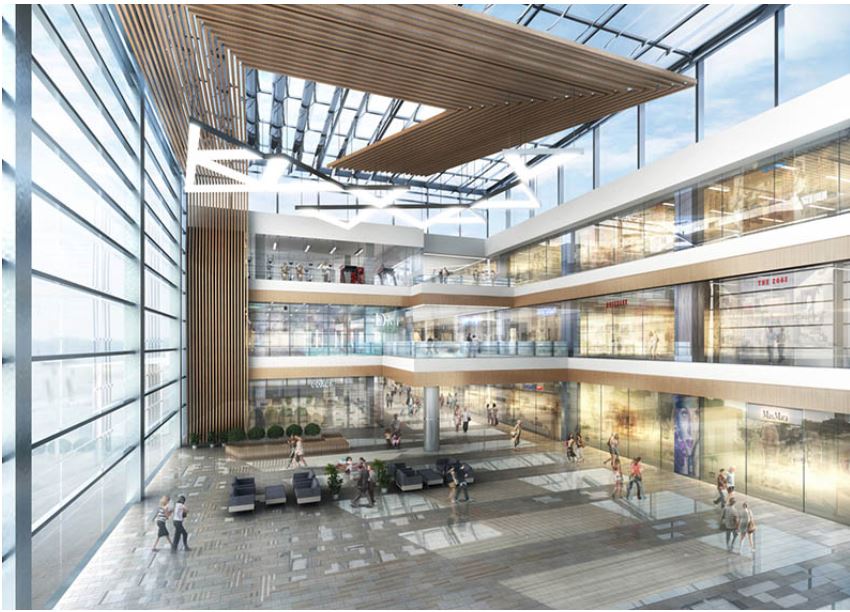|
July 2018
AutomatedBuildings.com
|
[an error occurred while processing this directive]
(Click
Message to Learn More)
|
The Buildings Data Analytics
Revolution in Three Acts
With the vast quantities of a building’s operational data available,
the use of a semantic, or tag-based, data analytics framework has
become an essential tool to leverage insights that can help us optimize
the ongoing operations of our buildings.
|

Ruairi Barnwell,
Principal
DLR Group
|
More than any
other technology, the fast-advancing field of semantic, or tag-based,
building data analytics is changing how we design, construct, and
operate high-performance buildings. Increased transparency of
operational building data is impacting accountability. This in turn is
fueling growth in smart building technologies and encouraging more
building-industry professionals to hone expertise in wrangling insights
from this data. It is a virtuous cycle encompassing three major
activities:
- Closing the design loop with operational building data;
- Creating actionable intelligence from building performance data;
and
- Using the ROI from deeper energy savings as a platform to
creating smarter buildings.
Act I: Closing the Design-Operations
Loop
First, delivering a building’s operational
data to the right
people at the right time has potential to bridge a major disconnect in
building design, construction, and operation. Design teams rarely get
enough feedback about how their solution is performing after it has
been delivered, and operations teams rarely have opportunity to offer
input when a building is being designed. In this scenario we are faced
with the challenge of designing and operating ultra-low energy
buildings, while balancing ultra-high expectations for enhanced
occupant comfort and end-user experience.

New Bund Enterprise Center in Shanghai by DLR
Group.
Rendering by DLR Group.
The design industry is evolving from a reliance on predicted EUI, or
energy use intensity, to gauge successful projects for a greater
emphasis on outcomes and actual post-occupancy building performance
data. Optimizing building performance early in design, with an
operations feedback loop for ongoing performance, is now a requirement,
not an option.
As my DLR Group colleague Amarpreet Sethi explains in this video, our goal
is always to analyze building performance data early in design to bring
quantitative insight to the decision-making process. Design team
members are typically first to forecast how occupants will use the
building. These behavioral predictions factor into simulations that
look at key high-performance building indicators relative to energy
consumption, indoor air quality (IAQ), occupant thermal comfort, and
overall user experience.
Data analytics is also used extensively in the commissioning of building systems
prior to final handover to the operations team. Critical to ensuring
that design strategies are executed as intended,
connected-commissioning (CCx) approaches help us optimize design during
construction as needed to deliver the building at peak performance on
the first day of occupancy. A building performance data analytics
platform makes it practical to evaluate 100 percent of the results
streaming from controllable points during the functional test phase,
such as every terminal unit, rather than a 10-to-20 percent sampling.
Once a building is instrumented for analytics, the detailed operations
of systems can be analyzed at will. Over the long-term, this feedback
loop will help high-performance designers ensure that efficient design
strategies are continually optimized based on the ongoing dynamic needs
of the end user.

Baoshan Long Beach Winder Tower in Shanghai by DLR
Groupcenter
Rendering by DLR Group.
When design teams have this inherent framework in place for validation
of post-occupancy building performance, they can apply the same rigor
of analytics to the building’s operational data set. Extending the
process that has traditionally occurred with the design data model can
close the design- operations loop.
Act II:
Turning Operational Data into Actionable Intelligence
Our buildings are overflowing with
data points. We have utilities data, metered data, building
automation systems trend data, IAQ data – and that is just the start.
With the vast quantities of a building’s operational data available,
the use of a semantic, or tag-based, data analytics framework has
become an essential tool to leverage insights that can help us optimize
the ongoing operations of our buildings.
Our industry tends to favor open protocols like BACnet and the use of
semantic data modeling such as Project Haystack because these make the job of
normalizing data for analysis easier to communicate. Early this year
when ASHRAE announced semantic data modeling is galvanizing
building performance, the announcement signaled that the various
development communities and standards bodies working on semantic
tagging are collaborating for a unified standard that will ultimately
be adopted into BACnet. It is good news for the early adopters of
open-protocol semantic tagging.
Algorithms, or tuned fault detection and diagnostics (FDD) rules, can
now be created and customized to match a facility’s equipment and
identify equipment performance issues. These rules-based data analytics
tools reveal the operational patterns of building systems,
automatically crunching through vast amounts of data to find and report
anomalies or issues that previously could not be uncovered
cost-effectively through conventional analysis. This allows an
experienced building performance analyst to use a monitoring-based commissioning (MBCx)
approach to monitor and verify building performance for the ability to
visualize this data graphically, analyze it, and prioritize issues
based on calculated impact to the building’s energy use, IAQ, occupant
comfort and operational efficiency. This process provides a curated,
prioritized list of issues with quantified impacts on building
performance to be presented to the building facilities team, on a
weekly, monthly or quarterly basis, and facilitates a proactive, rather
than reactive, approach to operations and maintenance.

Baoshan Long Beach Winder Tower in Shanghai by DLR
Group.
Rendering by DLR Group.
Once a data gathering framework and analysis protocol is established,
we can leverage actionable intelligence to achieve deeper energy
savings, enhanced IAQ, increased occupant comfort, and a proactive
approach to building maintenance – all of which impact a facility’s
operational financials and enhance the end-user experience.
From here the possibilities for improvement are endless. More
sophisticated manipulation of a building’s data set makes room for
further innovations such as automated work-orders, four-dimensional
plots of building sensor data, DVR’s of whole-building energy-use down
to the individual terminal unit level, and much more, for the
continuous monitoring, visualization, and optimization of building
performance.
Act III: Utilizing Energy Savings
for Smarter Buildings
The third phase of the virtuous cycle is all about what can be built
once you have laid the foundation for deeper energy savings by
collecting, visualizing and analyzing operational building performance
data. Adoption of new technology is often still justified by the ROI of
energy savings, despite the well-documented benefits of enhanced
occupant health, wellbeing, and productivity, in addition to operational efficiencies gained with smart building
technologies. The good news is that operational data analytics are
helping us find new layers of energy savings, with a very attractive
ROI.
From the data gathering framework, it is a short path to deploying IAQ
monitoring, thermal comfort optimization, occupancy awareness,
personalized lighting controls, and real-time conference room occupancy
tracking and scheduling. These types of smart building apps offer
investment returns that can be challenging to quantify, but are likely
to deliver much greater value to property owners and tenants over the
life of use.

The
Mob Museum in Las Vegas, Nevada by WRL|DLR Group.
Photo by Kevin G Reeves.
More smart building features also mean more Internet connectivity and
software in buildings. Standard metadata tagging helps simplify the
resulting data and maintain compliance with cyber-security best
practices. With a tagging-based framework, operational data models
express more than a basic identifier and time-stamped measurement. They
also carry contextual metadata describing a piece of equipment or
device, as well as its relationships to other devices and systems in
the building. Tagging can convey hardware make, model, and version
numbers, as well as firmware and software updates. Open source tagging
can also be consistently incorporated into BIM models, streamline the
deployment of analytics, and make the feedback loop more accurate and
efficient for design professionals.
[an error occurred while processing this directive]The best news is that the technology to do all of this is already in
place. Operational data analytics for deeper energy savings has become
the gateway to more powerful smart building strategies. Of course, the
virtuous cycle brought about by this revolution in operational data
analytics is not something to watch from the sidelines. It is not a
play in three acts. It is a call to action for our industry to be ready
to harness the power of building data analytics.
Learn more about our high-performance
building design and design optimization practice.
About the Author
Ruairi
leads the Building Optimization enterprise within the firm. In this
role, he is responsible for growing Building Optimization as a distinct
DLR Group service area while contributing his expertise in high
performance building design to benefit clients in the firm's core
market sectors.
Ruairi is a respected high-performance building design expert. His aim
is to elevate the built environment and restore order to the climate
for future generations. He specializes in commissioning services for
new and existing buildings, building energy assessments, high
performance building design, energy modeling/advanced building
simulation, and measurement and verification consulting.
Born and raised in Ireland, Ruairi earned an honors degree in Building
Services Engineering from the Dublin Institute of Technology, Ireland's
leading sustainable building engineering program.
footer
[an error occurred while processing this directive]
[Click Banner To Learn More]
[Home Page] [The
Automator] [About] [Subscribe
] [Contact
Us]